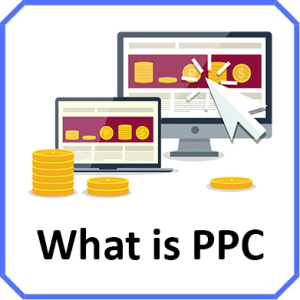
Introduction:
Pay-per-click (PPC) advertising is an effective digital marketing strategy that allows businesses to drive targeted traffic to their websites and maximize return on investment (ROI). However, to achieve optimal results, it is crucial to implement PPC campaigns strategically. In this step-by-step guide, we will explore the key elements of maximizing ROI with PPC advertising.
What is PPC:
PPC stands for Pay-Per-Click, which is a digital advertising model in which advertisers pay a fee each time their ads are clicked. It is a popular form of online advertising that allows businesses to drive targeted traffic to their websites and only pay when a user takes a specific action by clicking on their ad. PPC advertising is commonly associated with search engines, social media platforms, and display networks, where advertisers bid for ad placement in relevant search results or on websites.
In a PPC campaign, advertisers create ads and bid on specific keywords or target audience demographics. When a user performs a search query or meets the specified criteria, the ad is displayed. If the user clicks on the ad, the advertiser is charged a certain amount, hence the name “Pay-Per-Click.” The goal of PPC advertising is to drive qualified traffic to a website, increase brand visibility, and ultimately achieve a desired action, such as a purchase or lead generation.
One of the key advantages of PPC advertising is its ability to provide immediate visibility and results. Unlike traditional advertising methods, where businesses have to wait for their campaigns to gain traction, PPC campaigns can start driving traffic and generating leads or sales as soon as they are launched. This instant visibility allows businesses to quickly assess the effectiveness of their ads and make necessary adjustments to optimize their campaigns.
Another benefit of PPC advertising is its ability to target specific audiences. Advertisers can choose relevant keywords or demographic criteria to ensure that their ads are shown to the right people at the right time. This targeting capability helps businesses reach their desired audience and maximize the return on their advertising investment.
PPC advertising also offers flexibility and control to advertisers. They have control over their budget and can set daily or monthly spending limits. This allows businesses to allocate their advertising budget efficiently and make adjustments based on the performance of their campaigns. Additionally, advertisers have the ability to test different ad variations, keywords, and targeting options through A/B testing. This iterative testing process helps optimize campaigns and improve their overall performance.
To succeed in PPC advertising, thorough keyword research is crucial. By identifying relevant keywords and understanding their search volume and competition, advertisers can create targeted ad campaigns that align with user intent. Additionally, crafting compelling ad copy that highlights unique selling points and includes a clear call-to-action is essential to drive engagement and clicks.
Continuous monitoring and analysis of PPC campaigns are vital to ensure their effectiveness. Advertisers should regularly review key metrics such as click-through rates (CTR), conversion rates, cost per click (CPC), and return on ad spend (ROAS). These metrics provide insights into the performance of the campaigns and help advertisers make data-driven decisions to optimize their ads and maximize ROI.
In conclusion, PPC advertising is a powerful digital marketing strategy that allows businesses to drive targeted traffic, increase brand visibility, and achieve specific goals. With its instant visibility, targeting capabilities, flexibility, and control, PPC advertising provides businesses with a cost-effective and measurable way to reach their target audience and drive desired actions. By conducting thorough keyword research, creating compelling ad copy, and continuously optimizing campaigns based on data insights, businesses can maximize the benefits of PPC advertising and achieve a high return on investment.
Maximizing ROI with Pay-Per-Click Advertising: A Step-by-Step Guide
1. Set Clear Goals:
The first step in any successful PPC campaign is to establish clear and measurable goals. Define what you want to achieve, whether it’s increasing website traffic, generating leads, or boosting online sales. Having specific goals will help you tailor your PPC strategy and track the effectiveness of your campaigns.
2. Conduct Thorough Keyword Research:
Keyword research is vital for PPC success. Identify relevant keywords and phrases that align with your business offerings and target audience. Utilize keyword research tools to discover high-performing keywords with a balance between search volume and competition. Long-tail keywords can be particularly effective in driving qualified traffic and optimizing your budget.
3. Create Compelling Ad Copy:
Crafting engaging and compelling ad copy is essential for capturing the attention of your target audience. Develop concise and impactful headlines that include relevant keywords. Highlight unique selling points, promotions, or special offers to differentiate yourself from competitors. Use clear and persuasive language to encourage users to click on your ads.
4. Optimize Landing Pages:
A well-designed and optimized landing page can significantly impact the success of your PPC campaigns. Ensure that your landing pages align with the ad copy and provide a seamless user experience. Optimize landing pages for fast loading speed, mobile responsiveness, and clear call-to-action (CTA) buttons. Continuously test and refine your landing pages to improve conversion rates.
5. Implement Conversion Tracking:
Conversion tracking allows you to measure the effectiveness of your PPC campaigns and understand the ROI. Set up conversion tracking codes or pixels on your website to track important actions, such as form submissions, purchases, or newsletter sign-ups. Analyze conversion data to identify successful keywords, ads, and landing pages and optimize your campaigns accordingly.
6. Employ Ad Extensions:
Ad extensions provide additional information and functionality to your PPC ads, enhancing their visibility and relevance. Utilize various ad extensions such as sitelink extensions, call extensions, location extensions, and review extensions to provide more value to your audience. Ad extensions increase the chances of users clicking on your ads and improve the overall ad performance.
7. Implement A/B Testing:
A/B testing is a crucial strategy for optimizing PPC campaigns. Test different variations of your ads, landing pages, headlines, and CTAs to identify the best-performing elements. Experiment with different ad formats, bidding strategies, and targeting options. Continuously monitor the results and make data-driven decisions to refine and improve your campaigns over time.
8. Optimize for Mobile:
With the increasing prevalence of mobile devices, optimizing your PPC campaigns for mobile users is essential. Ensure that your ads and landing pages are mobile-friendly, with responsive designs and fast loading times. Leverage mobile-specific features, such as click-to-call buttons, to enhance the user experience and drive conversions.
9. Monitor and Adjust:
Regularly monitor the performance of your PPC campaigns and make necessary adjustments based on data insights. Keep a close eye on key metrics such as click-through rates (CTR), conversion rates, cost per acquisition (CPA), and return on ad spend (ROAS). Identify underperforming keywords, ads, or targeting options and make appropriate optimizations to maximize ROI.
10. Continuous Optimization and Iteration:
PPC advertising is an ongoing process that requires continuous optimization and iteration. Keep testing and refining your campaigns to stay ahead of the competition. Stay up-to-date with industry trends, new features,
and best practices to ensure your PPC strategy remains effective and aligned with your business goals.
Conclusion:
Maximizing ROI with PPC advertising requires careful planning, implementation, and continuous optimization. By setting clear goals, conducting thorough keyword research, creating compelling ad copy, optimizing landing pages, and employing tracking and testing strategies, businesses can significantly improve their PPC performance. Regular monitoring, adjustment, and staying informed about industry trends will ultimately lead to more successful and cost-effective PPC campaigns, resulting in higher ROI and business growth.





